48 book chapters
1) Chapter 3 - Extracellular vesicles for therapeutic and diagnostic applications
P.Ramani, H.Padinjarathil, S.Dattilo, C.Drago
Extracellular Vesicles for Therapeutic and Diagnostic Applications , 57-79 - 2025
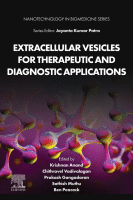 Interpreting the condition becomes increasingly challenging as it worsens, despite improving diagnostic accuracy. Exosomes and extracellular vesicles (EVs) are essential components of intercellular communication enclosed by membranes. They have drawn interest as a novel diagnostic approach with excellent specificity, biocompatibility, minimal immunogenicity, and a marvelous cargo system that can aid in understanding different disease stages, therapeutic tracking, and target-based prognosis treatment. Moreover, exosomes possess the distinctive ability to unveil both the physiological and pathological condition of cells. The subsequent sections of this chapter provide a comprehensive analysis of the latest modifications implemented on EVs and exosomes to augment their diagnostic capabilities. Additionally, it explores their efficacy as biomarkers in different medical conditions.
Interpreting the condition becomes increasingly challenging as it worsens, despite improving diagnostic accuracy. Exosomes and extracellular vesicles (EVs) are essential components of intercellular communication enclosed by membranes. They have drawn interest as a novel diagnostic approach with excellent specificity, biocompatibility, minimal immunogenicity, and a marvelous cargo system that can aid in understanding different disease stages, therapeutic tracking, and target-based prognosis treatment. Moreover, exosomes possess the distinctive ability to unveil both the physiological and pathological condition of cells. The subsequent sections of this chapter provide a comprehensive analysis of the latest modifications implemented on EVs and exosomes to augment their diagnostic capabilities. Additionally, it explores their efficacy as biomarkers in different medical conditions.
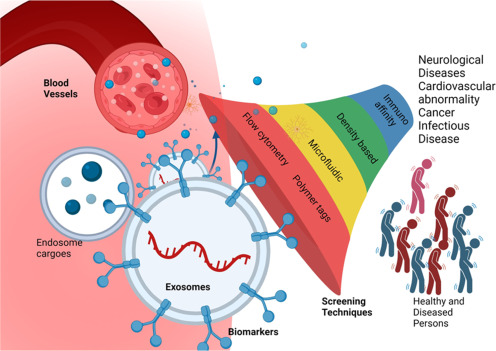
2) Freestanding Photocatalytic Materials Based on 3D Graphene for Degradation of Organic Pollutants
M.Ussia, V.Privitera, S.Carroccio
Graphene-based 3D Macrostructures for Clean Energy and Environmental Applications Chapter 13 - 2021
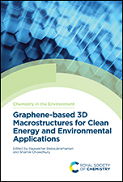
3) Tandem Mass Spectrometry in the Analysis of Biodegradable Polymers
P.Rizzarelli, M.Rapisarda
Mass Spectrometry: Theory and Applications Chapter 2, 127-181 - 2021
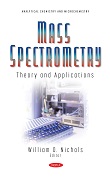
4) Analytical methods in resorbable polymer development and degradation tracking
P.Rizzarelli, S.La Carta, M.Rapisarda, G.Valenti
Materials for Biomedical Engineering Chapter 13, 351-408 - 2019
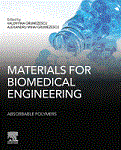 In resorbable polymers, the role of analytical methods is doubled, since it must address both polymeric matrices and degradation tracking. In fact, the structural architectures, the mechanical and morphological properties, and the degradation rate are all of crucial importance for the specific application.
In resorbable polymers, the role of analytical methods is doubled, since it must address both polymeric matrices and degradation tracking. In fact, the structural architectures, the mechanical and morphological properties, and the degradation rate are all of crucial importance for the specific application.5) CSF N-Glycoproteomics Using MALDI MS Techniques in Neurodegenerative Diseases
A.Messina, A.Palmigiano, R.O.Bua, D.Romeo, R.Barone, L.Sturiale, M.Zappia, D.Garozzo
Cerebrospinal Fluid (CSF) Proteomics 2044, 255-272 - 2019
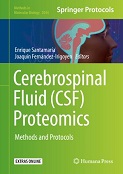 To characterize specific N-glycan profiles of CSF in early and advanced phases of Alzheimer’s disease, as well as in lysosomal storage disorders such as Tay-Sachs disease, we set up in our lab a robust and feasible protocol by coupling bioanalytical methods and mass spectrometry analysis.
To characterize specific N-glycan profiles of CSF in early and advanced phases of Alzheimer’s disease, as well as in lysosomal storage disorders such as Tay-Sachs disease, we set up in our lab a robust and feasible protocol by coupling bioanalytical methods and mass spectrometry analysis.6) Biophysical Approaches to Solve the Structures of the Complex Glycan Shield of Chloroviruses
C.De Castro, G.A. Duncan, D.Garozzo, A.Molinaro, L.Sturiale, M.Tonetti, J.L. Van Etten
Glycobiophysics 1104, 237-257 - 2018
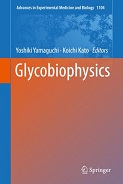 The glycan structures are unusual in many aspects: (1) they are attached by a Β-glucose linkage, which is rare in nature; (2) they are highly branched and consist of 8-10 neutral monosaccharides; (3) all four glycoforms contain a dimethylated rhamnose as the capping residue of the main chain, a hyper-branched fucose residue and two rhamnose residues with opposite absolute configurations; (4) the four glycoforms differ by the nonstoichiometric presence of two monosaccharides, L-arabinose and D-mannose; (5) the N-glycans from all of the chloroviruses have a strictly conserved core structure; and (6) these glycans do not resemble any structures previously reported in the three domains of life. The structures of these N-glycoforms remained elusive for years because initial attempts to solve their structures used tools developed for eukaryotic-like systems, which we now know are not suitable for this noncanonical glycosylation pattern. This chapter summarizes the methods used to solve the chlorovirus complex glycan structures with the hope that these methodologies can be used by scientists facing similar problems.
The glycan structures are unusual in many aspects: (1) they are attached by a Β-glucose linkage, which is rare in nature; (2) they are highly branched and consist of 8-10 neutral monosaccharides; (3) all four glycoforms contain a dimethylated rhamnose as the capping residue of the main chain, a hyper-branched fucose residue and two rhamnose residues with opposite absolute configurations; (4) the four glycoforms differ by the nonstoichiometric presence of two monosaccharides, L-arabinose and D-mannose; (5) the N-glycans from all of the chloroviruses have a strictly conserved core structure; and (6) these glycans do not resemble any structures previously reported in the three domains of life. The structures of these N-glycoforms remained elusive for years because initial attempts to solve their structures used tools developed for eukaryotic-like systems, which we now know are not suitable for this noncanonical glycosylation pattern. This chapter summarizes the methods used to solve the chlorovirus complex glycan structures with the hope that these methodologies can be used by scientists facing similar problems.7) CSF N-Glycomics Using MALDI MS Techniques in Alzheimer’s Disease
A.Palmigiano, A.Messina, R.O.Bua, R.Barone, L.Sturiale, M.Zappia, D.Garozzo
Biomarkers for Alzheimer’s Disease Drug Development , 75-91 - 2018
 N-glycans are released from denatured carboxymethylated glycoproteins by digestion with peptide-N-glycosidase F (PNGase F) and purified using both C18 Sep-Pak® and porous graphitized carbon (PGC) HyperSepTM HypercarbTM solid-phase extraction (SPE) cartridges. The glycan pool is subsequently permethylated to increase mass spectrometry sensitivity. Molecular assignments are performed through matrix-assisted laser desorption/ionization time-of-flight mass spectrometry (MALDI TOF MS) analysis considering either the protein N-inked glycosylation pathway or MALDI TOF MS/MS data. Each stage has been optimized to obtain high-quality mass spectra in reflector mode with an optimal signal-to-noise ratio up to m/z 4800. This method has been successfully adopted to associate specific N-glycome profiles to the early and the advanced phases of Alzheimer’s disease.
N-glycans are released from denatured carboxymethylated glycoproteins by digestion with peptide-N-glycosidase F (PNGase F) and purified using both C18 Sep-Pak® and porous graphitized carbon (PGC) HyperSepTM HypercarbTM solid-phase extraction (SPE) cartridges. The glycan pool is subsequently permethylated to increase mass spectrometry sensitivity. Molecular assignments are performed through matrix-assisted laser desorption/ionization time-of-flight mass spectrometry (MALDI TOF MS) analysis considering either the protein N-inked glycosylation pathway or MALDI TOF MS/MS data. Each stage has been optimized to obtain high-quality mass spectra in reflector mode with an optimal signal-to-noise ratio up to m/z 4800. This method has been successfully adopted to associate specific N-glycome profiles to the early and the advanced phases of Alzheimer’s disease.8) Advanced LC-MS Methods for N-Glycan Characterization
A.Palmigiano, A.Messina, L.Sturiale, D.Garozzo
Comprehensive Analytical Chemistry . Chapter 6 (ISSN 0166-526X) 79, 147-172 - 2018
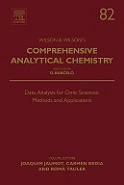 Glycosylation analysis in humans is an added value and a fundamental tool to characterize those genetic defects concerning glycan biosynthesis, such as congenital disorders of glycosylation. In addition, glycan alterations are associated with pathophysiology of major diseases as cancer and neurodegenerative dysfunctions. Concurrently, there is a growing interest of biopharmaceutical industries for the development of high-throughput methods for glycan analysis of therapeutic glycoproteins.N-linked glycans are commonly analyzed by liquid chromatography (LC) interfaced with fluorescence detection, but in the recent years a growing number of research laboratories extended the application by coupling LC with mass spectrometry (MS) techniques. Furthermore, LC-MS has become the primary device for smart high-throughput analyses.Here we report an outline of the prevailing LC-MS techniques set up for N-glycan analysis, paying special attention to N-glycomic characterization of human serum, as the most available and informative biological source for diagnosis and disease investigations.
Glycosylation analysis in humans is an added value and a fundamental tool to characterize those genetic defects concerning glycan biosynthesis, such as congenital disorders of glycosylation. In addition, glycan alterations are associated with pathophysiology of major diseases as cancer and neurodegenerative dysfunctions. Concurrently, there is a growing interest of biopharmaceutical industries for the development of high-throughput methods for glycan analysis of therapeutic glycoproteins.N-linked glycans are commonly analyzed by liquid chromatography (LC) interfaced with fluorescence detection, but in the recent years a growing number of research laboratories extended the application by coupling LC with mass spectrometry (MS) techniques. Furthermore, LC-MS has become the primary device for smart high-throughput analyses.Here we report an outline of the prevailing LC-MS techniques set up for N-glycan analysis, paying special attention to N-glycomic characterization of human serum, as the most available and informative biological source for diagnosis and disease investigations. 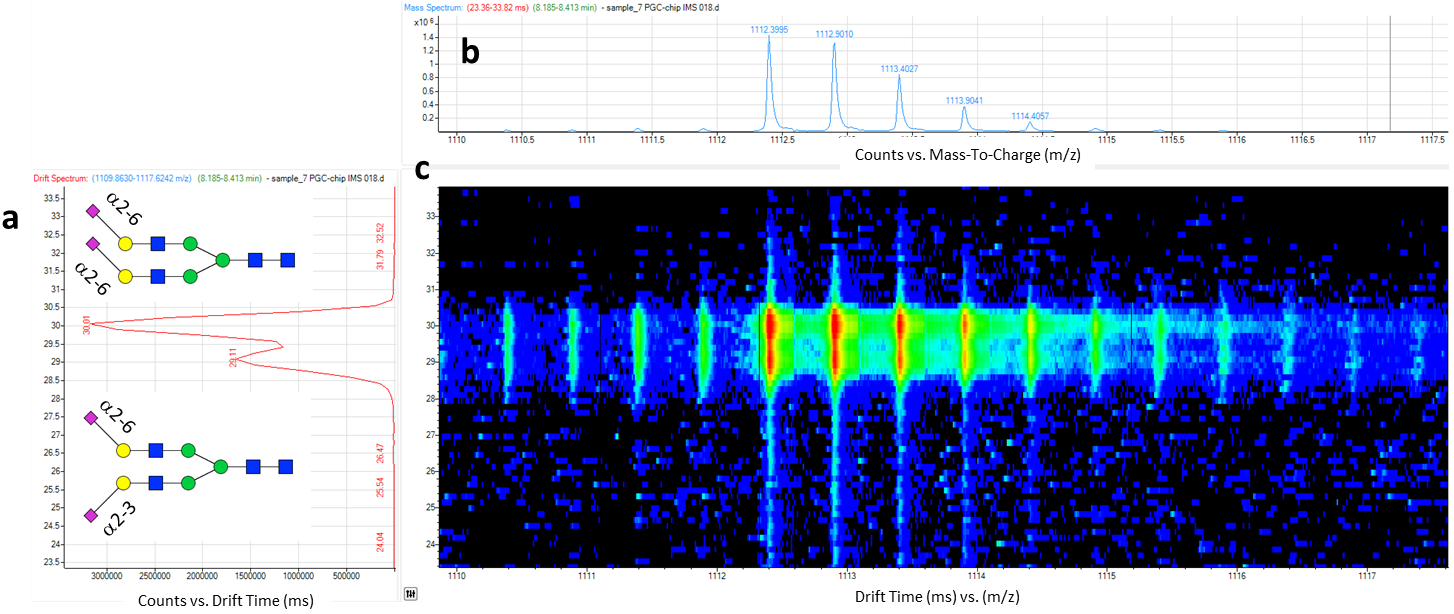
9) An Unexplained Congenital Disorder of Glycosylation-II in a Child with Neurohepatic Involvement, Hypercholesterolemia and Hypoceruloplasminemia
P.L.Calvo, M.Spada, I.Rabbone, M.Pino, F.Porta, F.Cisarò, S.Reggiani, A.B.Cefalù, L.Sturiale, D.Garozzo, D.J.Lefeber, J.Jaeken
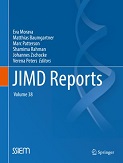 He showed increased (but initially, at 5 months, normal) serum cholesterol, increased alkaline phosphatases, transiently increased transaminases and hypoceruloplasminemia with normal serum and urinary copper. Blood levels of immunoglobulins, haptoglobin, antithrombin, and factor XI were normal. A type 2 serum transferrin isoelectrofocusing and hypoglycosylation of apoCIII pointed to a combined N- and O-glycosylation defect. Neither CDG panel analysis with 79 CDG-related genes, nor whole exome sequencing revealed the cause of this CDG. Whole genome sequencing was not performed since the biological parents of this adopted child were not available.
He showed increased (but initially, at 5 months, normal) serum cholesterol, increased alkaline phosphatases, transiently increased transaminases and hypoceruloplasminemia with normal serum and urinary copper. Blood levels of immunoglobulins, haptoglobin, antithrombin, and factor XI were normal. A type 2 serum transferrin isoelectrofocusing and hypoglycosylation of apoCIII pointed to a combined N- and O-glycosylation defect. Neither CDG panel analysis with 79 CDG-related genes, nor whole exome sequencing revealed the cause of this CDG. Whole genome sequencing was not performed since the biological parents of this adopted child were not available.10) Exchange Reaction Mechanisms in the reactive Extrusion of Condensation Polymers
C.Puglisi, F.Samperi
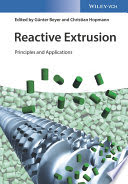
11) Chapter 3. Recent Trends in the Structural Characterization and Degradation of Biodegradable Polymers By Modern Mass Spectrometry
P.Rizzarelli, S.Carroccio
Biodegradable Polymers. Volume 1: Advancement in Biodegradation Study and Applications (Editors: Chih-Chang Chu - Cornell University, Ithaca, NY, USA ) - 2015
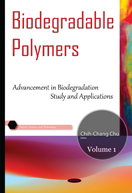 Much of the information used in this book is from the authors' own research activities over the past several decades. These 2 volume books contain a compilation of new developments in the creation and use of biodegradable polymers including the relatively new polymers designed from the ground up (i.e., designing new monomers), the modification of existing biodegradable polymers to achieve particular new goals and functions, new fabrication methods for better efficiency, purity and yields, new engineering methods to formulate existing biodegradable polymers into new physical forms, and new applications of existing or new biodegradable polymers in biomedical and environmental arenas.
Much of the information used in this book is from the authors' own research activities over the past several decades. These 2 volume books contain a compilation of new developments in the creation and use of biodegradable polymers including the relatively new polymers designed from the ground up (i.e., designing new monomers), the modification of existing biodegradable polymers to achieve particular new goals and functions, new fabrication methods for better efficiency, purity and yields, new engineering methods to formulate existing biodegradable polymers into new physical forms, and new applications of existing or new biodegradable polymers in biomedical and environmental arenas.12) Chapter 10. Role of Mass Spectrometry in the Elucidation of Thermal Degradation Mechanisms in Polymeric Materials
P.Rizzarelli, S.Carroccio
 Most papers concerning thermal degradation of polymeric materials are based on traditional MS methods, such as pyrolysis-gas chromatography/mass spectrometry (Py-GC/MS) and direct pyrolysis mass spectrometry (DPMS). These analyses are based on the estimation of the volatile compounds evolved from pyrolytic reactions. They can be helpful for comparisons of the relative thermal stability, the effects of additives, studies of degradation kinetics, and to propose a degradation mechanism. However, these techniques fail to provide a direct observation of the chemical changes occurring during degradation on a molecular level within the polymer backbone. The more recent MS methods, especially matrix-assisted laser desorption ionisation mass spectrometry (MALDI-MS), revealed great potential in highlighting degradation pathways, since they provide the opportunity to explore the finest structural details. This chapter provides an overview of the MS analytical tools used to investigate thermal degradation mechanisms in macromolecules, trying to answer the crucial question one might ask "Why employ MS techniques for thermal degradation studies of polymeric materials?"
Most papers concerning thermal degradation of polymeric materials are based on traditional MS methods, such as pyrolysis-gas chromatography/mass spectrometry (Py-GC/MS) and direct pyrolysis mass spectrometry (DPMS). These analyses are based on the estimation of the volatile compounds evolved from pyrolytic reactions. They can be helpful for comparisons of the relative thermal stability, the effects of additives, studies of degradation kinetics, and to propose a degradation mechanism. However, these techniques fail to provide a direct observation of the chemical changes occurring during degradation on a molecular level within the polymer backbone. The more recent MS methods, especially matrix-assisted laser desorption ionisation mass spectrometry (MALDI-MS), revealed great potential in highlighting degradation pathways, since they provide the opportunity to explore the finest structural details. This chapter provides an overview of the MS analytical tools used to investigate thermal degradation mechanisms in macromolecules, trying to answer the crucial question one might ask "Why employ MS techniques for thermal degradation studies of polymeric materials?"13) Spettrometria di Massa MALDI ed ESI per l’analisi dei polimeri in soluzione
S.Carroccio, P.Rizzarelli
"CARATTERIZZAZIONE DI MATERIALI POLIMERICI. Tecniche per polimeri in soluzione". Nuova Cultura (Collana AIM quaderni, ISBN: 9788868123048. DOI: 10.4458/3048) - 2014

14) Reversible Polymerization Techniques Leading to π-Stacked Polymers
A.Cappelli , M.Paolino, G.Grisci, G.Giuliani, A.Donati, A.C.Boccia, F.Samperi, R.Mendichi, S.Vomero
π-Stacked Polymers and Molecules , 51-149 - 2013
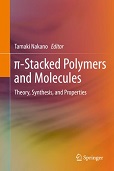 After a decade from the discovery of poly-BF1, the present chapter narrates the history of polybenzofulvene derivatives from the discovery to the latest developments. Now that more than 50 polymers belonging to this family have been synthesized and the relevant studies have been published in the most important journals dealing with polymer science, the spontaneous polymerization of benzofulvene monomers and the special features of the corresponding polymers appear to become a well-established topic. The chapter provides an in-depth analysis of the literature on the subject, from the preparation methods to the characterization of polybenzofulvene derivatives, the study of their properties, and the evaluation of the possible applications.
After a decade from the discovery of poly-BF1, the present chapter narrates the history of polybenzofulvene derivatives from the discovery to the latest developments. Now that more than 50 polymers belonging to this family have been synthesized and the relevant studies have been published in the most important journals dealing with polymer science, the spontaneous polymerization of benzofulvene monomers and the special features of the corresponding polymers appear to become a well-established topic. The chapter provides an in-depth analysis of the literature on the subject, from the preparation methods to the characterization of polybenzofulvene derivatives, the study of their properties, and the evaluation of the possible applications.15) Bone Dysplasia as a Key Feature in Three Patients with a Novel Congenital Disorder of Glycosylation (CDG) Type II Due to a Deep Intronic Splice Mutation in TMEM165
R.Zeevaert,F.De Zegher, L.Sturiale, D.Garozzo, M.Smet, M.Moens, G.Matthijs, J. Jaeken
JIMD Reports 8, 145-152 - 2013
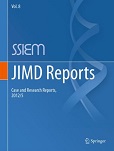 Other features were muscular hypotrophy, fat excess, partial growth hormone deficiency, and, in two of the three patients, episodes of unexplained fever. Additional investigations showed mild to moderate increases of serum transaminases (particularly of aspartate transaminase (AST)), creatine kinase (CK), and lactate dehydrogenase (LDH), as well as decreased coagulation factors VIII, IX, XI, and protein C. Diagnostic work-up revealed a type 2 serum transferrin isoelectrofocusing (IEF) pattern and a cathodal shift on apolipoprotein C-III IEF pointing to a combined N- and O-glycosylation defect. Known glycosylation disorders with similar N-glycan structures lacking galactose and sialic acid were excluded. Through a combination of homozygosity mapping and expression profiling, a deep intronic homozygous mutation (c.792 + 182G>A) was found in TMEM165 (TPARL) in the three patients. TMEM165 is a gene of unknown function, possibly involved in Golgi proton/calcium transport. Here we present a detailed clinical description of the three patients with this mutation. The TMEM165 deficiency represents a novel type of CDG (TMEM165-CDG). This disorder enlarges the group of CDG caused by deficiencies in proteins that are not specifically involved in glycosylation but that have functions in the organization and homeostasis of the intracellular compartments and the secretory pathway, like COG-CDG and ATP6V0A2-CDG.
Other features were muscular hypotrophy, fat excess, partial growth hormone deficiency, and, in two of the three patients, episodes of unexplained fever. Additional investigations showed mild to moderate increases of serum transaminases (particularly of aspartate transaminase (AST)), creatine kinase (CK), and lactate dehydrogenase (LDH), as well as decreased coagulation factors VIII, IX, XI, and protein C. Diagnostic work-up revealed a type 2 serum transferrin isoelectrofocusing (IEF) pattern and a cathodal shift on apolipoprotein C-III IEF pointing to a combined N- and O-glycosylation defect. Known glycosylation disorders with similar N-glycan structures lacking galactose and sialic acid were excluded. Through a combination of homozygosity mapping and expression profiling, a deep intronic homozygous mutation (c.792 + 182G>A) was found in TMEM165 (TPARL) in the three patients. TMEM165 is a gene of unknown function, possibly involved in Golgi proton/calcium transport. Here we present a detailed clinical description of the three patients with this mutation. The TMEM165 deficiency represents a novel type of CDG (TMEM165-CDG). This disorder enlarges the group of CDG caused by deficiencies in proteins that are not specifically involved in glycosylation but that have functions in the organization and homeostasis of the intracellular compartments and the secretory pathway, like COG-CDG and ATP6V0A2-CDG.16) Polymers
M.S.Montaudo, S.Battiato
Mass Spectrometry Handbook Chapter 45, 1079-1105 - 2012
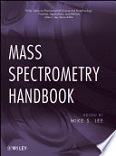
17) Deficiency of Subunit 6 of the Conserved Oligomeric Golgi Complex (COG6-CDG): Second Patient, Different Phenotype
S.Huybrechts, C.De Laet, P.Bontems, S.Rooze, H.Souayah, Y.Sznajer, L.Sturiale, D.Garozzo, G.Matthijs, A.Ferster, J.Jaeken, P.Goyens
JIMD Reports 4, 103-108 - 2012
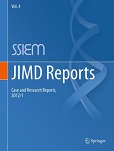 She presented at birth with dysmorphic features including microcephaly, post-axial polydactyly, broad palpebral fissures, retrognathia, and anal anteposition. The clinical phenotype was further characterised by multiorgan involvement including mild psychomotor retardation, and microcephaly, chronic inflammatory bowel disease, micronodular liver cirrhosis, associated with lifethreatening and recurrent infections due to combined T- and B-cell dysfunction and neutrophil dysfunction. Mutation analysis showed the patient to be homozygous for the c.G1646T mutation in the COG6 gene. She is the second reported patient with a deficiency of subunit 6 of the COG complex. Although both patients are homozygous for the same mutation, they present a markedly different clinical picture. Indeed immunodeficiency as well as inflammatory bowel disease has not been described previously in patients with any COG-CDG.
She presented at birth with dysmorphic features including microcephaly, post-axial polydactyly, broad palpebral fissures, retrognathia, and anal anteposition. The clinical phenotype was further characterised by multiorgan involvement including mild psychomotor retardation, and microcephaly, chronic inflammatory bowel disease, micronodular liver cirrhosis, associated with lifethreatening and recurrent infections due to combined T- and B-cell dysfunction and neutrophil dysfunction. Mutation analysis showed the patient to be homozygous for the c.G1646T mutation in the COG6 gene. She is the second reported patient with a deficiency of subunit 6 of the COG complex. Although both patients are homozygous for the same mutation, they present a markedly different clinical picture. Indeed immunodeficiency as well as inflammatory bowel disease has not been described previously in patients with any COG-CDG.18) Polymer Degradation
P.Rizzarelli, S.Carroccio, C.Puglisi
Mass Spectrometry in Polymer Chemistry Chapter 13, 437-465 - 2011
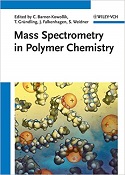 The idiom "polymer degradation" takes account of different processes, induced by one or more environmental factors such as heat, light, microorganisms, or chemicals that deteriorate polymers producing alterations in their properties. The degradation is the result of irreversible changes that are usually undesirable or, in some cases, required, as in biodegradation or recycling, or else induced to support structure determination. Degradation plays an important role in every life phase of a polymer, that is, during its synthesis, processing, use, and even after it has accomplished its planned purpose. As a result, stabilization is required to extend the life time of most polymers. Compounding with stabilizers is the preferred and well-established method for improving stability. However, monitoring and controlling degradation requires the understanding of many different phenomena, including the diverse chemical mechanisms underlying structural changes in macromolecules, the complex reaction pathways of additives, the interactions of fillers, as well as impurities, and the complicated relationship between molecular-level changes and macroscopic properties. Various schemes to classify polymer degradation exist. Because of its complexity, with regard to both the causes and the response of the polymer, classification is usually performed on the basis of the dominating features. We will refer to the classification based on the main factors responsible for degradation: thermal, thermo-oxidative, photo, photo-oxidative, hydrolytical, chemical, biological degradation, and so on. Modern mass spectrometry (MS) methods for their high sensitivity, selectivity, and speediness offer the opportunity to explore the finest structural details in polymer degradation. In fact, whatever the cause, the deterioration mainly yields degradation products frequently bearing characteristic end groups, which can be revealed and differentiated by MS, being indicative of specific degradation pathways [1-12]
The idiom "polymer degradation" takes account of different processes, induced by one or more environmental factors such as heat, light, microorganisms, or chemicals that deteriorate polymers producing alterations in their properties. The degradation is the result of irreversible changes that are usually undesirable or, in some cases, required, as in biodegradation or recycling, or else induced to support structure determination. Degradation plays an important role in every life phase of a polymer, that is, during its synthesis, processing, use, and even after it has accomplished its planned purpose. As a result, stabilization is required to extend the life time of most polymers. Compounding with stabilizers is the preferred and well-established method for improving stability. However, monitoring and controlling degradation requires the understanding of many different phenomena, including the diverse chemical mechanisms underlying structural changes in macromolecules, the complex reaction pathways of additives, the interactions of fillers, as well as impurities, and the complicated relationship between molecular-level changes and macroscopic properties. Various schemes to classify polymer degradation exist. Because of its complexity, with regard to both the causes and the response of the polymer, classification is usually performed on the basis of the dominating features. We will refer to the classification based on the main factors responsible for degradation: thermal, thermo-oxidative, photo, photo-oxidative, hydrolytical, chemical, biological degradation, and so on. Modern mass spectrometry (MS) methods for their high sensitivity, selectivity, and speediness offer the opportunity to explore the finest structural details in polymer degradation. In fact, whatever the cause, the deterioration mainly yields degradation products frequently bearing characteristic end groups, which can be revealed and differentiated by MS, being indicative of specific degradation pathways [1-12]19) From micro- to femto-moles, from small to giant molecules: the route of modern Mass Sectrometry
A.Palmigiano, D.Garozzo
Seminars in organic synthesis SCI June 13-17, 2011 Gargnano (BS), 264-279 - 2011
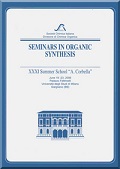 "A mass spectrometer is an instrument that measures the masses of individual molecules thathave been converted to ions; i. e. molecules that have been electrically charged"; using simply words: a machine used to weigh molecules. This definition is obviously correct, but the mass spectrometer is much more than an instrument. It is a complete laboratory for the investigation of molecules, clusters, and other species under the environment-free conditions of the gas phase. For this reason Mass Spectrometry (MS) is widely used today by almost all chemists and many researchers from neighbouring disciplines such as physics, medicine, or biology as a powerful analytical tool. Today the mass spectrometer is more and more present in the pharmaceutical industry, in the biological labs, in the hospitals and in many other bio-labs, while until few years ago it was present only in specialized chemical lab. This revolution starts at the end of 1980s with the introduction of two different methods able to desorbs and ionize molecules with molecular weights in a range from few hundreds daltons to millions. Until then, a few techniques, fast atom bombardment (FAB), plasma desorption (PD) and desorption chemical ionization (DCI) were able to carry out in the gas phase and to ionize molecules with a molecular weight greater than one thousand, but they all required high concentrations of sample and they did not work at all for larger molecules such as proteins or polymers. Then, in 1988, Electrospray ionization (ESI) invented by John B. Fenn and Matrix assisted laser desorption (MALDI) introduced by Franz Hillenkamp and Michael Karas appeared almost simultaneously. These desorption-ionization methods revolutionized MS and are the main forms of ionization to this day. In the beginning the two techniques were not believed robust enough, but at the end of 1990s almost all MS instruments on the market were MALDI or ESI.
"A mass spectrometer is an instrument that measures the masses of individual molecules thathave been converted to ions; i. e. molecules that have been electrically charged"; using simply words: a machine used to weigh molecules. This definition is obviously correct, but the mass spectrometer is much more than an instrument. It is a complete laboratory for the investigation of molecules, clusters, and other species under the environment-free conditions of the gas phase. For this reason Mass Spectrometry (MS) is widely used today by almost all chemists and many researchers from neighbouring disciplines such as physics, medicine, or biology as a powerful analytical tool. Today the mass spectrometer is more and more present in the pharmaceutical industry, in the biological labs, in the hospitals and in many other bio-labs, while until few years ago it was present only in specialized chemical lab. This revolution starts at the end of 1980s with the introduction of two different methods able to desorbs and ionize molecules with molecular weights in a range from few hundreds daltons to millions. Until then, a few techniques, fast atom bombardment (FAB), plasma desorption (PD) and desorption chemical ionization (DCI) were able to carry out in the gas phase and to ionize molecules with a molecular weight greater than one thousand, but they all required high concentrations of sample and they did not work at all for larger molecules such as proteins or polymers. Then, in 1988, Electrospray ionization (ESI) invented by John B. Fenn and Matrix assisted laser desorption (MALDI) introduced by Franz Hillenkamp and Michael Karas appeared almost simultaneously. These desorption-ionization methods revolutionized MS and are the main forms of ionization to this day. In the beginning the two techniques were not believed robust enough, but at the end of 1990s almost all MS instruments on the market were MALDI or ESI.20) Two Argentinean Siblings with CDG-Ix: A Novel Type of Congenital Disorder of Glycosylation?
M.B.Bistuè Millòn, M.A.Delgado, N.B.Azar, N.Guelbert, L.Sturiale, D.Garozzo, G.Matthijs, J.Jaeken, R.Dodelson de Kremer, C.G.Asteggiano
JIMD Reports 1/2011, 65-72 - 2011
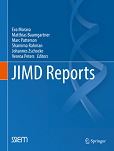 In this chapter, we report the clinical, biochemical, and molecular findings in two siblings with an unidentified CDG (CDG-Ix). They are the first and the third child of healthy consanguineous Argentinean parents. Patient 1 is now a 11-year-old girl, and patient 2 died at the age of 4 months. Their clinical picture involved liver dysfunction in the neonatal period, psychomotor retardation, microcephaly, seizures, axial hypotonia, feeding difficulties, and hepatomegaly. Patient 1 also developed strabismus and cataract. They showed a type 1 pattern of serum sialotransferrin. Enzymatic analysis for phosphomannomutase and phosphomannose isomerase in leukocytes and fibroblasts excluded PMM2-CDG and MPI-CDG. Lipid-linked oligosaccharide (LLO) analysis showed a normal profile. Therefore, this result could point to a deficiency in the dolichol metabolism. In this context, ALG8-CDG, DPAGT1-CDG, and SRD5A3-CDG were analyzed and no defects were identified. In conclusion, we could not identify the genetic deficiency in these patients yet. Further studies are underway to identify the basic defect in them, taking into account the new CDG types that have been recently described.
In this chapter, we report the clinical, biochemical, and molecular findings in two siblings with an unidentified CDG (CDG-Ix). They are the first and the third child of healthy consanguineous Argentinean parents. Patient 1 is now a 11-year-old girl, and patient 2 died at the age of 4 months. Their clinical picture involved liver dysfunction in the neonatal period, psychomotor retardation, microcephaly, seizures, axial hypotonia, feeding difficulties, and hepatomegaly. Patient 1 also developed strabismus and cataract. They showed a type 1 pattern of serum sialotransferrin. Enzymatic analysis for phosphomannomutase and phosphomannose isomerase in leukocytes and fibroblasts excluded PMM2-CDG and MPI-CDG. Lipid-linked oligosaccharide (LLO) analysis showed a normal profile. Therefore, this result could point to a deficiency in the dolichol metabolism. In this context, ALG8-CDG, DPAGT1-CDG, and SRD5A3-CDG were analyzed and no defects were identified. In conclusion, we could not identify the genetic deficiency in these patients yet. Further studies are underway to identify the basic defect in them, taking into account the new CDG types that have been recently described.21) Handbook of Engineering and Speciality Thermoplastics: Volume 3: Polyethers and Polyesters (chapter 12 "Polycarbonates")
F.Samperi, M.S.Montaudo, G.Montaudo
Sabu Thomas and Visakh P.M. 3, 493-529 - 2011
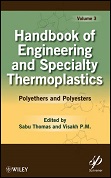 The application of different polymerization procedure of hte commercial aromatic bisphenol-A polycarbonate (referred herein as PC) and the innovative enzymatic catalysed polymerization of aliphatic polycarbonate are summarized. Due to the high engineering performance of PC polymer, an extensive section on mechanical, electrical, chemical and therma properties is included. The thermo and photo oxidative behaviours, the hydrolytic stability and the consequent modification on PC chemical structure are also discussed. The development of PC polymeric materials such as composites and blends are also addressed, emphasizing in particular the properties and the applications of impact modified PC blends and even of PC/Polyester systems.
The application of different polymerization procedure of hte commercial aromatic bisphenol-A polycarbonate (referred herein as PC) and the innovative enzymatic catalysed polymerization of aliphatic polycarbonate are summarized. Due to the high engineering performance of PC polymer, an extensive section on mechanical, electrical, chemical and therma properties is included. The thermo and photo oxidative behaviours, the hydrolytic stability and the consequent modification on PC chemical structure are also discussed. The development of PC polymeric materials such as composites and blends are also addressed, emphasizing in particular the properties and the applications of impact modified PC blends and even of PC/Polyester systems.22) Predicting and Measuring the Sequence Distribution of condensation Polymers (chapter 11 of "Mathematical approaches to polymer sequence analysis and related problems")
M.S.Montaudo
R.Bruni - Springer Chapter 11, 227-246 - 2011
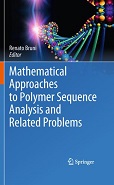 The theory predicts that the sequence is often radically different from addition polymers. One of the causes is the presence of a larger number of distinct monomers in the reaction vessel. Condensation copolymers from symmetric and asymmetric monomers involve a different number of parameters to be modeled, since asymmetric monomers require an additional parameter. A peculiar reaction is discussed, namely the synthesis of copolymers obtained by melt-mixing two different homopolymers. The sequence of copolymer fractions collected at the exit of a liquid chromatographic device is discussed as well. The measurement of condensation-polymer sequence distribution can be performed using nuclear magnetic resonance (NMR) and mass spectrometry (MS). Examples drawn from recent literature are discussed.
The theory predicts that the sequence is often radically different from addition polymers. One of the causes is the presence of a larger number of distinct monomers in the reaction vessel. Condensation copolymers from symmetric and asymmetric monomers involve a different number of parameters to be modeled, since asymmetric monomers require an additional parameter. A peculiar reaction is discussed, namely the synthesis of copolymers obtained by melt-mixing two different homopolymers. The sequence of copolymer fractions collected at the exit of a liquid chromatographic device is discussed as well. The measurement of condensation-polymer sequence distribution can be performed using nuclear magnetic resonance (NMR) and mass spectrometry (MS). Examples drawn from recent literature are discussed.23) Predicting and Measuring the Sequence Distribution of Addition Polymers (chapter 10 of "Mathematical approaches to polymer sequence analysis and related problems")
M.S.Montaudo
R.Bruni Edito (Springer) Chapter 10, 197-225 - 2011
 In many cases, the sequence distribution will be Markovian (of the first or second order), but in other cases, it cannot be described by Markovian statistics. Three examples of sequences falling in the latter class are discussed. All types of copolymers are considered: AB copolymers, ABC copolymers, ABCD copolymers. As reaction time increases, polymerization dynamics becomes less trivial. Additional parameters are required to describe how copolymer sequence varies as the reaction yield (or the reaction time) increases. Nevertheless, reaction products are conceptually simple points, and it is possible to follow their changes by drawing their trajectories in a multidimensional phase space. The task of measuring the sequence distribution is seldom trivial. Many examples of polymer sequencing using NMR spectroscopy have been collected and discussed by Randall. Mass spectrometry is also used. Often sequence distribution information must be extracted from experimental data. Flexible empirical models have been developed for this aim. Mixtures of two bernoullian chains and mixtures of two markovian chains are used. The pertubed markovianmodel features ε, a perturbation factor. Some experimental methods attempt to measure polymer sequence by partial degradation, i.e., by reducing the length of the chains until a mixture of tetramers, pentamers and hexamers is obtained. This procedure yields a new copolymer, with a new sequence distribution. The sequence of the undegraded polymer must be reconstructed from the knowledge of the sequence of the partially degraded one.
In many cases, the sequence distribution will be Markovian (of the first or second order), but in other cases, it cannot be described by Markovian statistics. Three examples of sequences falling in the latter class are discussed. All types of copolymers are considered: AB copolymers, ABC copolymers, ABCD copolymers. As reaction time increases, polymerization dynamics becomes less trivial. Additional parameters are required to describe how copolymer sequence varies as the reaction yield (or the reaction time) increases. Nevertheless, reaction products are conceptually simple points, and it is possible to follow their changes by drawing their trajectories in a multidimensional phase space. The task of measuring the sequence distribution is seldom trivial. Many examples of polymer sequencing using NMR spectroscopy have been collected and discussed by Randall. Mass spectrometry is also used. Often sequence distribution information must be extracted from experimental data. Flexible empirical models have been developed for this aim. Mixtures of two bernoullian chains and mixtures of two markovian chains are used. The pertubed markovianmodel features ε, a perturbation factor. Some experimental methods attempt to measure polymer sequence by partial degradation, i.e., by reducing the length of the chains until a mixture of tetramers, pentamers and hexamers is obtained. This procedure yields a new copolymer, with a new sequence distribution. The sequence of the undegraded polymer must be reconstructed from the knowledge of the sequence of the partially degraded one.24) COG5-CDG with a Mild Neurohepatic Presentation
C.W.Fung. G.Matthijs, L.Sturiale, D.Garozzo, K.Y.Wong, R.Wong, V.Wong, J.Jaeken
JIMD Reports DOI 10.1007/8904_2011_61 - 2011
 It affects the localization of several Golgi glycosyltransferases and hence is involved in N- and O-glycosylation. Genetic defects in this complex belong to the rapidly expanding family of congenital disorders of glycosylation (CDG). Patients have been reported with defects of subunit 1 (CDG1-CDG), subunit 4 (CDG4-CDG), subunit 5 (CDG5-CDG), subunit 6 (CDG6-CDG), subunit 7 (CDG7-CDG), and subunit 8 (CDG8-CDG). This paper is on the second reported patient with COG5-CDG. She showed a mild neurohepatic disease with central as well as peripheral neurological involvement while in the first reported patient (with a different mutation) only mild central neurological involvement was reported.
It affects the localization of several Golgi glycosyltransferases and hence is involved in N- and O-glycosylation. Genetic defects in this complex belong to the rapidly expanding family of congenital disorders of glycosylation (CDG). Patients have been reported with defects of subunit 1 (CDG1-CDG), subunit 4 (CDG4-CDG), subunit 5 (CDG5-CDG), subunit 6 (CDG6-CDG), subunit 7 (CDG7-CDG), and subunit 8 (CDG8-CDG). This paper is on the second reported patient with COG5-CDG. She showed a mild neurohepatic disease with central as well as peripheral neurological involvement while in the first reported patient (with a different mutation) only mild central neurological involvement was reported.25) Polyetherimide
S.Carroccio, C.Puglisi, G.Montaudo
Book on Engineering and Specialty Thermoplastics II chapter 4, 79-110 - 2011
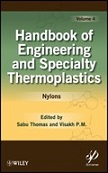 The ingenious application of nitro-displacement reaction on the synthesis of polyetherimide as well the existing one step polymerization methods, the new approaches and innovative solutions in processing operations are summarized. Due to the high engineering performance of PEI material, an extensive section on mechanical, electrical, chemical and thermal properties is included. The thermo and photo oxidative behaviours, the hydrolytic stability and the the consequent modifi cation on PEI chemical structure are also discussed. The new development of PEI materials such as blends, composites with particular attention to nano-composites, and the most recent patents and related commercial products are also addressed in the chapter.
The ingenious application of nitro-displacement reaction on the synthesis of polyetherimide as well the existing one step polymerization methods, the new approaches and innovative solutions in processing operations are summarized. Due to the high engineering performance of PEI material, an extensive section on mechanical, electrical, chemical and thermal properties is included. The thermo and photo oxidative behaviours, the hydrolytic stability and the the consequent modifi cation on PEI chemical structure are also discussed. The new development of PEI materials such as blends, composites with particular attention to nano-composites, and the most recent patents and related commercial products are also addressed in the chapter.26) Mass Spectrometry: Instrumentation, Interpretation, and Applications (Cap.15 Polymers)
M.S.Montaudo
Wiley Publications cap.15, 299 - 2009
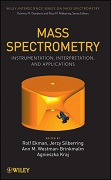 to introduce students to the whole world of mass spectrometry and to the many different perspectives that each scientific field brings to its use. The book emphasizes the use of this important analytical technique in many different fields, including applications for organic and inorganic chemistry, forensic science, biotechnology, and many other areas. After describing the history of mass spectrometry, the book moves on to discuss instrumentation, theory, and basic applications.
to introduce students to the whole world of mass spectrometry and to the many different perspectives that each scientific field brings to its use. The book emphasizes the use of this important analytical technique in many different fields, including applications for organic and inorganic chemistry, forensic science, biotechnology, and many other areas. After describing the history of mass spectrometry, the book moves on to discuss instrumentation, theory, and basic applications.27) Size- Exclusion Chromatography/Matrix - Assisted Laser Desorption Ionization and SEC/NMR Techniques for Polymer Characterization
M.S.Montaudo
Multiple Detection in Size-Exclusion Chromatography. Andre M.Striege, Editor the Florida State University ACS SYMPOSIUM SERIES 893 Chapter 9 - 2004
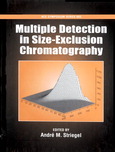 A characterization method is used which consists in fractionating the copolymer by size-exclusion chromatography (SEC), collecting 30-40 fractions and then recording both the nuclear magnetic resonance (NMR) spectroscopy and matrix-assisted laser desorption ionization (MALDI) spectra of the fractions. In a successive step, Bivariate Distribution of chain sizes and composition maps are derived from knowledge of the molar mass, weight, and composition of the copolymer fractions.
A characterization method is used which consists in fractionating the copolymer by size-exclusion chromatography (SEC), collecting 30-40 fractions and then recording both the nuclear magnetic resonance (NMR) spectroscopy and matrix-assisted laser desorption ionization (MALDI) spectra of the fractions. In a successive step, Bivariate Distribution of chain sizes and composition maps are derived from knowledge of the molar mass, weight, and composition of the copolymer fractions. 28) Copolymer characterization by SEC-NMR and SEC-MALDI
M.S.Montaudo
ACS Symposium Series 834, 358 - 2003
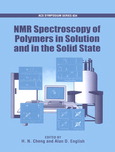 First, a method is used, consisting of fractionating the copolymer by SEC and recording both the NMR and MALDI spectra of the fractions, In a successive step, the bivariate distribution of chain sizes and composition maps are derived from a knowledge of the molar mass, weight and composition of the copolymer fractions. The compositional distribution is obtained by summation of the sections of the bivariate distribution which belong to a narrow compositional range. Secondly, a model for SEC fractionation of copolymers is developed. It permits the prediction of the composition and dispersity of each SEC fraction. Thirdly, offline SEC-MALDI measurements are performed, in order to measure dispersity experimentally for the random copolymer, The agreement between theoretical and experimental values for dispersity and for the composition of the SEC fraction (as derived from SEC-NMR measurements) is good. The predictions of the model also compare favorably with literature SEC fractionation data of a copolyester of butylene adipate and butylene sebacate.
First, a method is used, consisting of fractionating the copolymer by SEC and recording both the NMR and MALDI spectra of the fractions, In a successive step, the bivariate distribution of chain sizes and composition maps are derived from a knowledge of the molar mass, weight and composition of the copolymer fractions. The compositional distribution is obtained by summation of the sections of the bivariate distribution which belong to a narrow compositional range. Secondly, a model for SEC fractionation of copolymers is developed. It permits the prediction of the composition and dispersity of each SEC fraction. Thirdly, offline SEC-MALDI measurements are performed, in order to measure dispersity experimentally for the random copolymer, The agreement between theoretical and experimental values for dispersity and for the composition of the SEC fraction (as derived from SEC-NMR measurements) is good. The predictions of the model also compare favorably with literature SEC fractionation data of a copolyester of butylene adipate and butylene sebacate.29) Direct pyrolysis of polymers into the ion source of a mass spectrometer (DP-MS)
G.Montaudo, C.Puglisi
Mass Spectrometry of Polymers , 181 - 2002
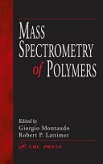 A review on the principles and methodol. as well as selected applications (poly(styrene sulfide), evolution of aroms. in the thermal degrdn. of poly(vinyl chloride), nylon 6.6, poly(ethylene terephthalate), poly(bisphenol-A carbonate), poly(ether imide), and polymer blends) of DP-MS
A review on the principles and methodol. as well as selected applications (poly(styrene sulfide), evolution of aroms. in the thermal degrdn. of poly(vinyl chloride), nylon 6.6, poly(ethylene terephthalate), poly(bisphenol-A carbonate), poly(ether imide), and polymer blends) of DP-MS 30) Matrix-Assisted Laser Deserption Ionization Mass Spectrometry of Polymers (MALDI-MS)
G.Montaudo, M.S.Montaudo, F.Samperi
G.Montaudo, R.P.Lattimer (EDS) CRC Press Chapter 10, 419 - 2001

31) Fast Atom Bombardment of Polymers
G.Montaudo, F.Samperi
G.Montaudo, R.P.Lattimer (EDS) CRC Press Chapter 7, 269 - 2001

32) Direct Pyrolysis of Polymers into the Ion Source of a Mass Spectrometer (DP-MS)
G.Montaudo, C.Puglisi
G.Montaudo, R.P.Lattimer (EDS) CRC Press Chapter 5, 181 - 2001

33) Polymer Characterization Methods
G.Montaudo, M.S.Montaudo
G.Montaudo, R.P.Lattimer (EDS) CRC Press Chapter 2, 41 - 2001

34) Mass Spectrometry of Polymers
G.Montaudo, R.P.Lattimer

35) Copolymer Composition: a Key to the Mechanisms of Exchange in Reactive Polymer Blending
G.Montaudo, C.Puglisi, F.Samperi
S.Fakirov(Ed)WILEY-VCH. Chapter 4, 159 - 1999
36) Recent Advances in Mass Spectrometry of Polymers, in Experimental Methods in Polymer Characterization
E.Scamporrino, D.Vitalini
R.A.Pethrick Editor - P.233 - John Wiley & Sons - Ltd - Publisher - 1999
37) Computer tool for the speciation of natural fluids
C.De Stefano, S.Sammartano, P.Mineo, C.Rigano
A. Gianguzzo et al. (eds) - Marine Chemistry 1997, 71 - 1997
38) Maldi Ms of oligo and polysaccharides in Mass Spectrometry in the Biomolecular Sciences, R. M. Caprioli et al (eds)
D.Garozzo
Kluwer Academic Publishers 1997, 477 - 1997
39) Time-of-Flight SIMS Characterization of Nylon6/polycarbonate blends in Secondary Ion Mass Spectrometry-SIMS X
A.Licciardello, C.Puglisi, E.Niehuis, A.Benninghoven
A. Benninghoven, F. Linton, H. Werner, Eds. John Wiley & Sons. - 1997
40) Structural Characterization of Synthetic Polymers and Copolymers by FAB-MS
G.Montaudo, E.Scamporrino, D.Vitalini
In Applied polymer Analysis and Characterization , J.Mitchell Ed., Hanser, Munich Vol 2, 79 - 1992
41) Thermal Degradation of Condensation Polymers
G.Montaudo, C.Puglisi
Comprehensive Polymer Science, First Supplement. Pergamon Press, Oxford 1992, 227 - 1992
42) Microstructure of Bacterial Poly(B-hydroxybutirate-co-B-hydroxyvalerate) by Fast Atom Bombardment Mass SpectrometryAnalysis of their Partial Degradation Products
A.Ballistreri, D.Garozzo, M.Giuffrida, G.Montaudo
Novel Biodegradable Microbial Polymers ,E.A.Dawes Ed., Kluwer 1990, 49 - 1990
43) Formation of cyclic oligomers
P.Maravigna, G.Montaudo
Comprehnsive Polymer Science G.C.Eastmond, A.Ledwith, S.Russo, S.Sigwalt Eds. Pergamon Press Oxford 5, 63 - 1989
44) Thermal degradation mechanisms in condensation polymers
G.Montaudo, C.Puglisi
Dev. Polym. Degrad. 7, 35 - 1987
45) Mass spectrometric detection of cyclic sulfides in the polycondensation of dibromoalkanes with dithiols
G.Montaudo, E.Scamporrino, C.Puglisi, D.Vitalini
J. Polym. Sci., Polym. Symp. 74, 285 - 1986
46) Direct mass spectrometry of polymers
S.Foti, G.Montaudo
"Mass Spectrometry of Large Molecules" S. Facchetti Ed. Elsevier Science Pub.Amsterdam 1985, 283 - 1985
47) Acid-catalyzed photoreactions: photolytic behavior of polyamides containing truxillic and truxinic units
G.Montaudo, E.Scamporrino
Dev. Polym. Degrad. 5, 121 - 1984
48) Analysis of polymers by mass spectrometry
S.Foti, G.Montaudo
Applied Science 1982, 103 - 1982